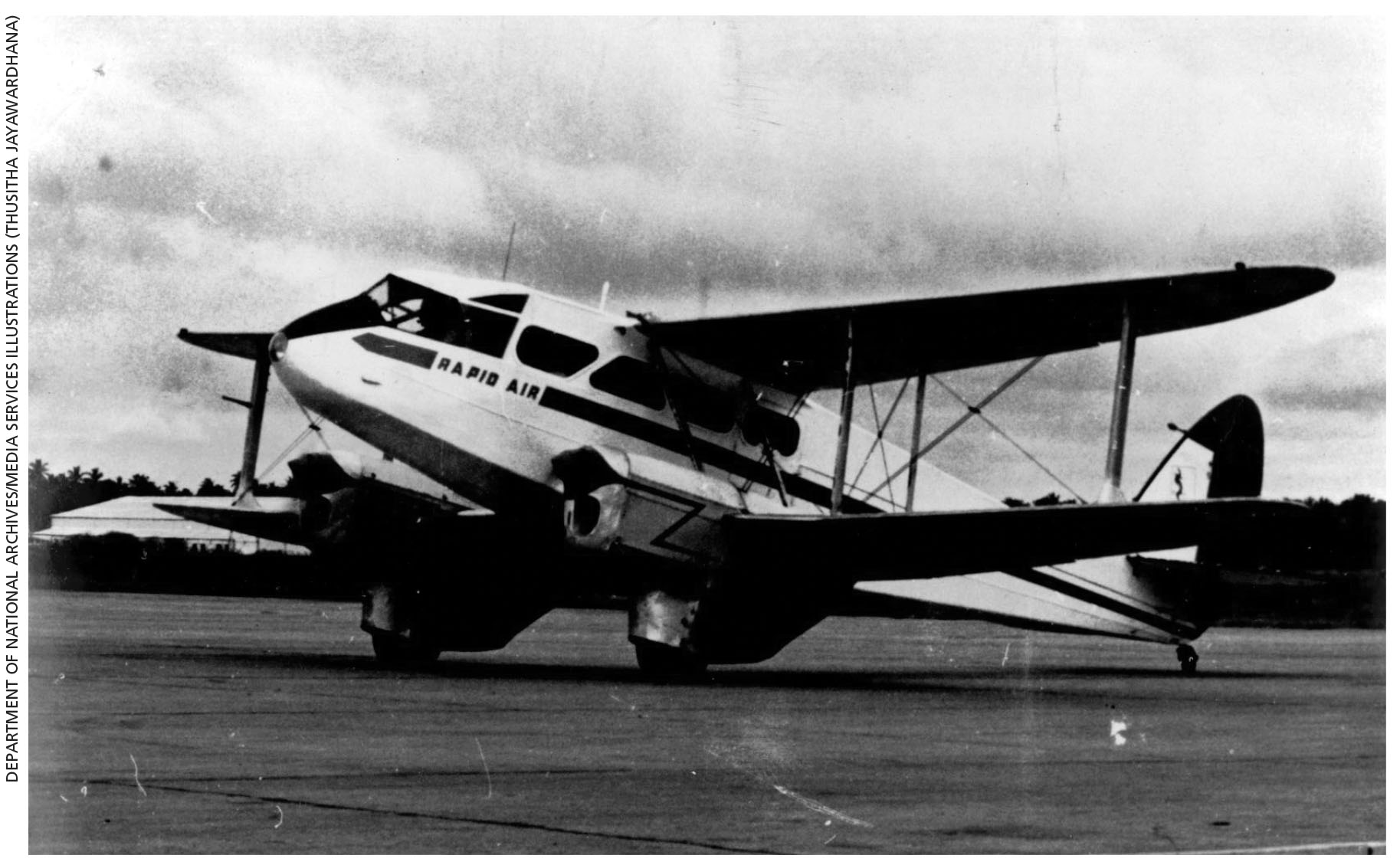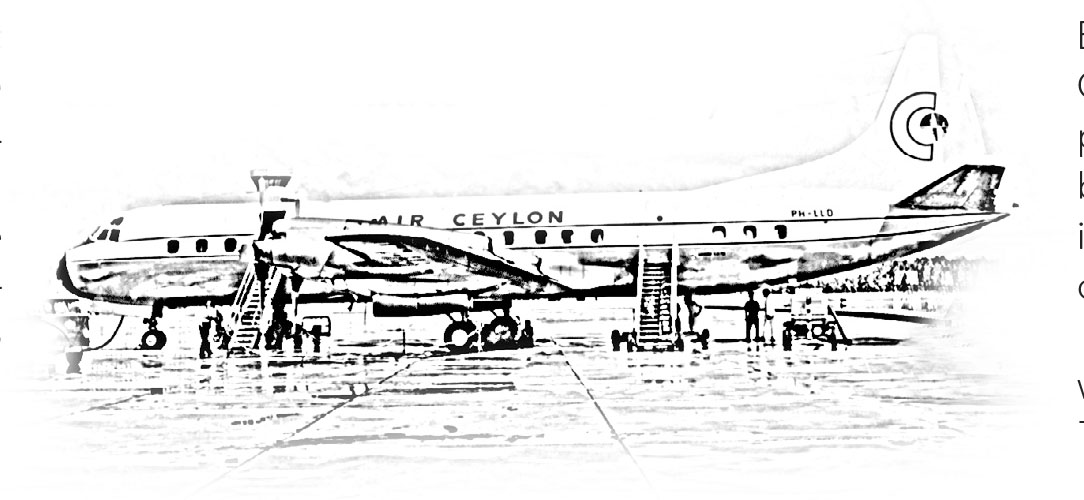1947
Air Ceylon Becomes the Island’s Flag Carrier
Colony takes to the air ahead of freedom
There are certain aspects of national life that guarantee a warm glow at the centre of any citizen’s being. One of these is arguably seeing one’s country’s flag flying true and strong in the face of a stiff offshore breeze. Another demonstrably is being able to watch as your nation’s flag carrier takes to the skies for the first time…
Ceylonese from all walks of life were privy to such a proud moment – a year ahead of winning the island’s independence – when its national carrier was launched in 1947.
On 10 December that year, a Douglas DC3 piloted by Captain Peter Fernando took off from Ratmalana Airport with a complement of 16 passengers on board, bound for Madras (now Chennai) on the Indian subcontinent, after making a stopover at Palaly in our northern peninsula.
This pioneering flight was aboard an aircraft named Sita Devi – one of three war surplus DC3s purchased by the Ceylonese government (the others were called Sunethra Devi and Viharamaha Devi) – to bolster its fledgling fleet and inaugurate the island’s aviation history.
The colony’s standard-bearer in the skies was initially a domestic operator, which employed a fleet of Douglas C47 (Dakota) aircraft for this purpose. A year after parting ways with its parent empire, Air Ceylon’s operations expanded to the international arena in 1949, using Douglas DC4 planes.
Air Ceylon’s chequered career included the Douglas C47 Skytrain services via the Jaffna-Madras-Trichinopoly route to London, using two Douglas DC4 Skymasters (named Ratmalana and Laxapana) leased from Australian National Airways (ANA), which had a 49 percent stake until 1953 – later, taken over by KLM Royal Dutch Airlines in 1955; and being the second of four international partners, the other two being Britain’s BOAC and France’s UTA.
The national carrier discontinued all flights to Europe in 1978 upon declaring bankruptcy (Air Ceylon was chronically undercapitalised, poorly managed by bureaucrats on shoestring budgets and subject to constant political interference, resulting in poor purchase decisions).
And eventually, it ceased all local services as well, ahead of its rebranding as Air Lanka in 1979.
Ceylonese from all walks of life were privy to such a proud moment – a year ahead of winning the island’s independence – when its national carrier was launched in 1947





